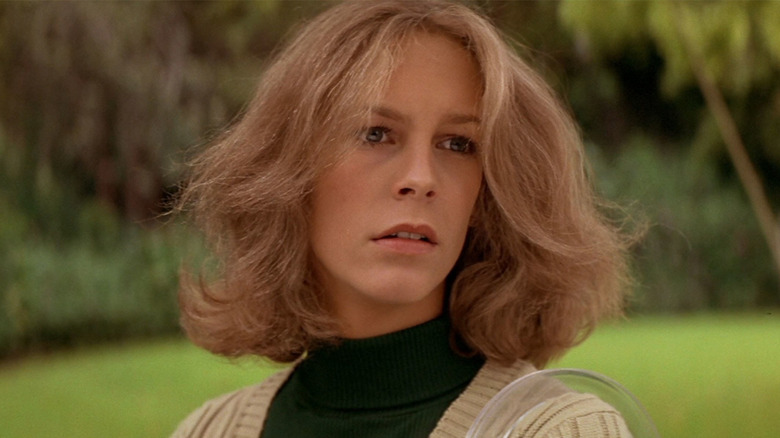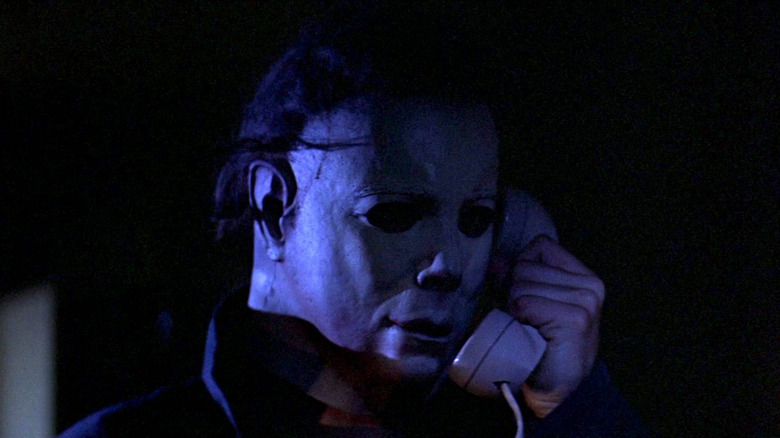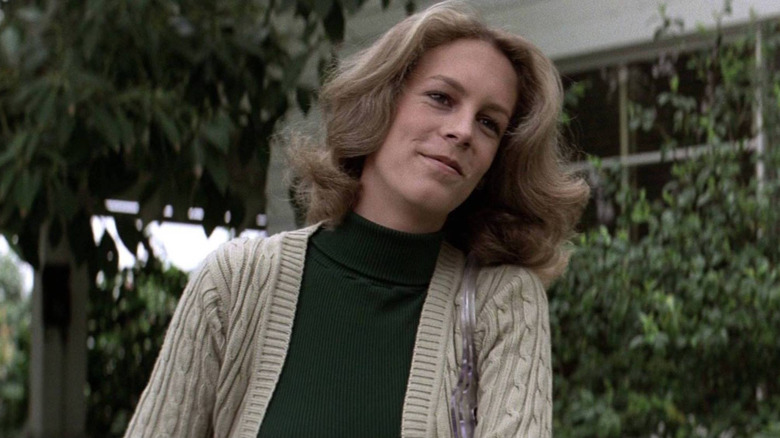It's 2025 And I Just Watched 1978's Halloween For The First Time – These Are My Honest Thoughts
It's hard to go in spoiler-free to 1978's "Halloween" in 2025. Even as someone whose horror movies tendencies only really pick up in October, I was well aware of some big beats heading in. Michael Myers (Nick Castle) is a voiceless, murderous avatar of evil. Laurie Strode (Jamie Lee Curtis) survives. John Carpenter's theme song absolutely, categorically bumps. And yet, I was entirely unprepared for exactly what I would find when I finally watched "Halloween" for the first time.
For context, I love Carpenter's work — "The Thing" and "Escape from New York" in particular, but also "They Live," "Big Trouble in Little China," and his criminally underrated "Lost Themes" synthwave albums of the last decade. As someone who's always preferred the sci-fi side of horror to more traditional slashers or paranormal scares, the "Halloween" movies just never fell directly onto my list. Going in, I was excited, expecting something akin to the Carpenter films of the '80s.
Oh, what a difference a few years, millions of dollars, and a massive indie hit can make. Right from the jump, "Halloween" makes it extremely clear what kind of film it is: the kind crafted with passion and a lot of fantastic aesthetics, but for hardly any money at all. Its $325,000 budget shows from start to finish, delivering equal parts charm, character, and camp. These characters are barely characters (forgive me, it's true), and the plot is barely a plot, and yet, I thoroughly enjoyed the movies, though perhaps in a different way than audiences of the time.
The aesthetics of Halloween hold up
The movie I kept thinking of after finishing "Halloween" for the first time was the original "Mad Max," released just a year later in 1979 and made for roughly the same measly amount of money. Both films built the framework for a whole category of genre fiction, largely off their compelling aesthetics. The writing, plotting, and composition of both can be difficult to return to absent a historical lens, but there's still a lot of fun to be had in the look, sound, and overall feel of these films.
In the case of "Mad Max," the idea of leather-clad gunmen running each other off backroads in the Australian outback is just good. Execution notwithstanding (George Miller reached much greaters heights with his second "Mad Max" film), the core idea read. In the same way, Michael Myers' masked stalking of Laurie Strode and her teenage babysitter friends through a darkening suburban landscape simply works.
As my fiancé commented while we watched, it's largely a movie about people walking around. "Halloween" opens with its most technically impressive and aesthetically memorable sequence, shot through the eyes of six-year-old Michael Myers on the night he murders his sister. It's a bold intro full of glorious camp, along with some really striking camerawork. While nothing in the rest of the film quite hits that same high, its numerous tracking shots, rocky handcam work, and use of background and shadows all build an effective sense of unsettling surveillance.
This is a movie about watching and being watched, anchored by a titanic score from Carpenter that frankly makes everything work. It doesn't matter how often you've heard that theme song, it hits every time it comes on. It's the one part of "Halloween," for my money, that still feels absolutely timeless.
Halloween is more time capsule than timeless classic
"Halloween" is still a lot of fun in 2025, and as a horror movie with a very tight focus, its lack of any real character development or narrative variance isn't anywhere close to a catastrophe. The fact remains, though, that this movie is no more than what it is: a $325,000 experiment in mood, tone, and stylish camera work. If you're looking for much beyond that here, and you don't have longstanding nostalgia for the film that kicked off the franchise, you may come away a little disappointed.
Still, the things I liked far outweighed the things I didn't. I like the initial reveal of how young Michael is when he kills his sister. I like how skinny he is, far from the hulking monster he's become in pop culture. I love how loosely the jacket hangs on him, the campy dialogue between Laurie and her friends, the cute friendship between the babysat kiddos, and the ambiguous, unsettling ending, framed in a series of the sort of still shots we so rarely get in the rest of the movie. I love that Michael, being the forefather of the modern slasher villain, doesn't really understand the rules of the genre he's originating. He stalks awkwardly in broad daylight, hides behind bushes, and frequently misses with his knife.
Where "The Thing" remains a Carpenter horror flick just as good as it was the day it came out, "Halloween" needs a bit more help. It's more time capsule than timeless classic, and a lot of the fun that's still there in 2025 is at the expense of the low-budget camp, but when was that ever a bad thing?
Hell, for an hour and a half, the music alone makes it worth the watch.


